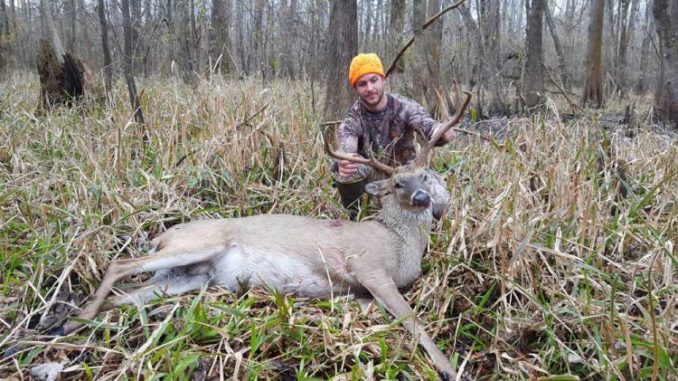
Louisiana’s public lands hunters have more than 1.5 million acres at their disposal. But which state wildlife management areas offer the best chance to score this fall? Find out in this year’s WMA Forecast.
Biologists from each of Louisiana’s seven wildlife management area regions crunched the numbers and analyzed data from last year’s hunting seasons to give you an idea of how some of the 50 state WMAs might perform this fall. But drought, flooding, mast production, lactation rates and habitat condition all play a role in determining what public lands hunters might encounter when heading into the field starting this month. So read up on prospects for your favorite tract, or maybe scout some new territory after you’re armed with historical harvest information and the outlook for this season.
COASTAL OPTIONS
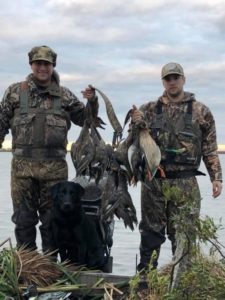
Waterfowlers enjoy duck hunting each season on the state’s public lands, where they can average around 2.5 ducks per effort in Louisiana.
Atchafalaya Delta Wildlife Management Area (WMA), Pass-a-Loutre WMA, Pointe-aux-Chene WMA and Salvador WMA take center stage for gunning down birds along the coast. And you can expect more action and increased harvests in those mostly marshy environments for the 2018-19 season.
Overall habitat conditions are average and should remain that way barring hurricanes and tropical storms, according to program manager Lance Campbell with the Louisiana Department of Wildlife and Fisheries.
Duck habitat promising
Naturally, all that’s needed are ducks to get to the lowest reaches of the Mississippi Flyway. Habitat conditions and submerged aquatic vegetation (SAV) won’t be a limiting factor.
“The 2017-18 waterfowl season yielded average kill-per-effort on coastal WMAs,” Campbell said. “Since habitat conditions are currently in relatively good shape, we are optimistic that the 2018-19 season will be successful.”
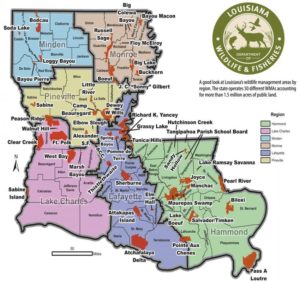 At Atchafalaya Delta WMA, 1,769 hunter efforts resulted in 2.6 ducks per hunter effort, he said, noting Pass-A-Loutre WMA had 665 efforts and 3.7 ducks per hunter; Pointe-aux-Chene WMA had 1,383 efforts and 2.5 birds per hunter and Salvador WMA had 385 efforts and a 2.2 duck-per-hunter average.
At Atchafalaya Delta WMA, 1,769 hunter efforts resulted in 2.6 ducks per hunter effort, he said, noting Pass-A-Loutre WMA had 665 efforts and 3.7 ducks per hunter; Pointe-aux-Chene WMA had 1,383 efforts and 2.5 birds per hunter and Salvador WMA had 385 efforts and a 2.2 duck-per-hunter average.
Overall, there were 2.6 ducks per hunter effort in 4,202 hunter trips across the Coastal Nongame Resources Division.
Average SAV production is a good thing, and that’s the current status at the 137,695-acre Atchafalaya Delta WMA in St. Mary Parish.
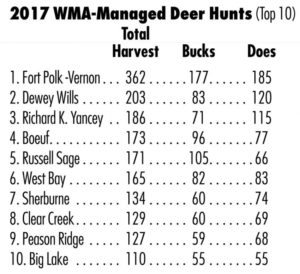 Pass-a-Loutre WMA’s SAV growth also was average in July on the 115,000-acre area in Plaquemines Parish, where waterfowl habitat also is expected to be average or slightly above average. Hopefully, Cambell said, SAV growth will be average by the time the season starts on 33,488-acre Pointe-aux-Chene WMA that spans Terrebonne and Lafourche parishes, a scenario that would attract and hold waterfowl.
Pass-a-Loutre WMA’s SAV growth also was average in July on the 115,000-acre area in Plaquemines Parish, where waterfowl habitat also is expected to be average or slightly above average. Hopefully, Cambell said, SAV growth will be average by the time the season starts on 33,488-acre Pointe-aux-Chene WMA that spans Terrebonne and Lafourche parishes, a scenario that would attract and hold waterfowl.
As of mid-summer, the coastal operations manager said SAV production also was above average in larger ponds and lakes at the 34,520-acre Salvador/Timken WMA in St. Charles Parish, where waterfowl habitat has declined the past few years because of water hyacinths, salvinia and emergent vegetation growth. However, this year there are less water hyacinths and salvinia there, he said.
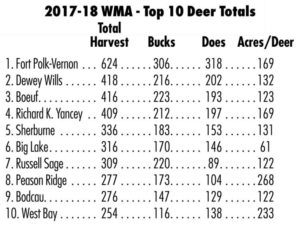 Go to Atchafalaya Delta for deer
Go to Atchafalaya Delta for deer
If you are a bowhunter who dreams of getting a shot at trophy deer, head to the Main Delta of the Atchafalaya Delta WMA.
Historically, the area has yielded some of the larger deer harvested across coastal WMAs, Campbell reported. Adult archery hunting for deer and annual youth lottery gun hunts are allowed only on the Main Delta, 15,000 acres of marsh habitat that feature spoil islands for higher ground.
So how big do the deer get? Last season, these were some notable swamp bucks taken, including a 170-pound 10-point with a 16 ½-inch inside spread, and a 160-pound 8-point with a 15-inch inside spread.
There is quantity, as well as quality, in the deer herd on Attakapas WMA. Nearly 90 deer were killed by bowhunters there last season.
“The five-year average for deer archery harvest at Atchafalaya WMA is 152 deer. We expect a similar harvest … for the 2018-19 season,” Campbell said.
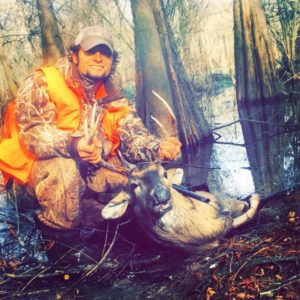
Pass-A-Loutre WMA and Salvador WMA had higher kill-per-hunter effort last season than Atchafalaya. Hunters averaged one deer per 9.7 efforts at Pass-a-Loutre, and Salvador hunters averaged one deer per 24.5 efforts — very good averages for coastal WMAs, Campbell said.
Squirrels at Pointe-aux-Chenes
South Louisiana squirrel hunters in the know understand that some of the best action among the coastal WMAs is at Point-aux-Chenes and Lake Boeuf, an 800-acre area in Lafourche Parish.
Small game hunting for bushytails is at its finest, weather and habitat conditions permitting, at the Point Farm Unit on Pointe-aux-Chene, according to Campbell. The unit is approximately 1,500 acres of forested habitat with more than 500 acres of hardwood trees planted during past mitigation projects.
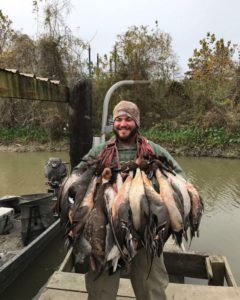
Generally, squirrel hunters bag an average of two squirrels per hunting effort there based on self-clearing reports in the past five years.
Coastal options pros
• Gov. John Bel Edwards announced in July that $60 million in new coastal projects will be built and paid for with money from the settlement of the Deepwater Horizon oil spill. Of that total, $920,440 will go to dredging waters to create improved boating access to Atchafalaya Delta WMA.
• Fortunately, the many WMAs in this region haven’t been impacted severely by a hurricane in a while: Hurricane Isaac back in 2012 was the last storm to significantly damage a coastal WMA.
• Atchafalaya Delta’s “spoil islands” provide great semi-upland deer habitat, and the size of those continue to improve.
• Pass-A-Loutre WMA, despite its remote location, is a deer-hunting hotspot for those willing to put in the time and effort. Last season, deer hunters there harvested an average of one deer per 9.7 efforts, a very good number for coastal WMAs.
Coastal options cons
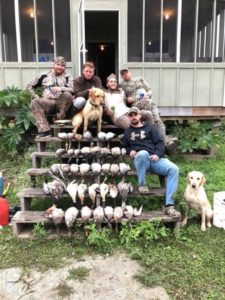
• Pointe-aux-Chene WMA’s rabbit numbers are lower than previous years based on preliminary assessments. Low rainfall totals in the spring may have contributed to lower reproduction there.
• Also, Pointe-aux-Chene’s submerged aquatic vegetation is below average, probably because of high water turbidity and salinity. Conditions are better west of Grand Bayou.
HAMMOND REGION
Which wildlife management area does a squirrel hunter or someone who loves to walk the woods or other terrain to kill rabbits choose to hunt in the Hammond region?
Brad Breland, biologist supervisor and acting regional manager there, said hunters can’t go wrong at any of the region’s nine WMAs.
While deer hunting, duck hunting and even dove hunting exploits grab much of the spotlight each season, plenty of squirrels and rabbits are harvested on the region’s top three WMAs for small game – Pearl River, Maurepas Swamp and Tunica Hills.
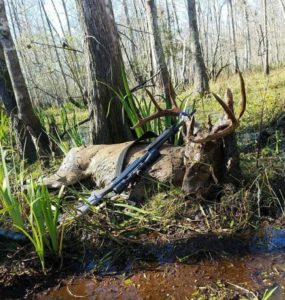
“Our WMAs provide (small game) hunters the opportunity to hunt a diverse range of habitat types, from upland hardwoods down to cypress/tupelo swamps and brackish marsh. Whether it be abundant mast-producing hardwoods or the early successional habitat in our region, all provide ample resources for small game,” he said.
Pearl River for bushytails
Pearl River WMA’s squirrel hunting is hard to beat. Its close proximity to New Orleans makes it a popular destination — in the 2017-18 harvest reported, 1,707 squirrels were taken in 1,914 hunter efforts.
The 35,619-acre WMA in St. Tammany Parish was impacted by Hurricane Katrina, Breland noted, as the storm laid down timber like pickup sticks. The area has opened up and become more accessible since the hurricane, but there remains plenty of understory and early successional habitat.
More importantly, mast production last year was average, which bodes well for the upcoming season.
“We have been seeing plenty of squirrels on the areas and expect to have another successful season,” Breland said.
Maurepas Swamp WMA, a 124,568-acre area that spans Ascension, Livingston, St. John the Baptist, St. James and Tangipahoa parishes and is accessible only by boat, yielded a reported 979 squirrels in 608 hunter efforts last season. The area gives up squirrels consistently, and that should be the case again this year, he said.
Tunica Hills WMA, a much smaller (6,503 acres) area in West Feliciana Parish, is another favorite place for squirrel hunters, with an abundance of mature oaks and other mast-producing trees that provide good habitat. Last season, 463 squirrels were reported harvested in 306 hunter efforts.
Maurepas swamp for deer
If you don’t mind the extra effort to get a good shot at deer, consider hunting at Maurepas Swamp WMA, a very large area that is secluded and difficult to enter. Hunters recommend wearing hip boots rather than waders, and carrying maps, a compass and a handheld GPS.
“Most of this area is difficult to access,” Breland said. “As a result, deer on this area do not receive as much pressure as they would on smaller, more accessible WMAs.”
But the tough hunts in those wetlands are productive, as 2017-18 proved when 160 deer were reported harvested in 2,284 hunter efforts.
The combination of marsh, timber and spoil banks provide habitat. The key, veteran deer hunters say, is to find the transition zones from hardwoods to upland pines, or where older pines meet younger pines.
Pearl River and Tunica Hills are the other top deer-hunting WMAs. At Pearl River, 61 deer were harvested in 2,428 hunter efforts, while 59 deer were taken at Tunica Hills in 1,581 hunter efforts in 2017-18.
Manchac a good option for waterfowl
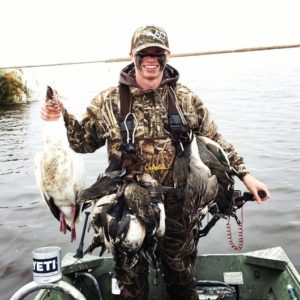
The leader of the pack for Southeast Louisiana waterfowl hunting on public areas is Pearl River WMA, which has beaucoup habitat – plenty of brackish marsh – below U.S. Highway 90.
“With plenty of waterfowl habitat, this WMA consistently has high harvest numbers in our region. Barring any tropical storm activity, we expect a good upcoming season,” Breland said.
Pearl River WMA’s central region features cypress/tupelo swamp. The upper region has mixed pine and bottomland hardwoods.
In the lower portions of the area, gadwall, widgeon and teal are in the majority. In the upper portions, mallards and wood ducks reign supreme.
Breland also noted that Manchac WMA is another popular destination in the region, despite limited access — it’s paddle-in only. Many duck hunters are successful in the “The Prairie,” a 600-acre area near the shoreline of Lake Pontchartrain.
“This area also provides great waterfowl habitat and consistently sees some of the higher harvest numbers in our region,” he said.
Manchac WMA users are advised to make sure their boats, trailers and other equipment are cleaned and free of giant salvinia before leaving.
Hammond Region pros
• The Hammond Region recently took over the Biloxi Marsh WMA in St. Bernard Parish from the Coastal and Nongame Resources Division. The 35,000-acre area is popular among waterfowl hunters — Shell Beach and Breton Sound Marina are a few of the access points.
• Tunica Hills WMA will be the site of an approved timber operation this year, a move that hopefully will put some sunlight on the ground on the South Tract, improving deer habitat and offering hunters increased opportunities for years to come.
• Joyce WMA’S acreage has grown with the transfer of property from Maurepas Swamp WMA. Those sections on the western side of the interstate (the Rathborne Tract) are now part of Joyce WMA (see updated WMA maps).
Hammond Region cons
• Pearl River WMA had a high harvest of feral hogs last season, but they still pose a threat as vectors of disease and are direct competitors with native wildlife for resources.
• Manchac WMA has been saturated with giant salvinia and water hyacinths. LDWF personnel are making every effort to control its spread with herbicide applications and release of giant salvinia weevils.
• Entry to Joyce WMA’s Limited Access Area on the northern end has been restricted because of excessive water hyacinth coverage.
LAFAYATTE REGION
Potentially good deer hunting success awaits hunters who head to Thistlethwaite WMA in the Lafayette region.
Sure, Richard K. Yancey is known for the big buck potential it offers, and Sherburne’s deer herd is rebounding just fine since the flood of 2011. But those are proven WMAs that can be traversed a little easier than Thistlethwaite.
Try Thistlethwaite for deer
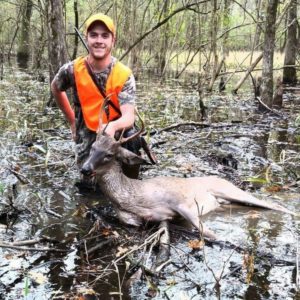
The dense understory of palmetto and vegetation on Thistlethwaire, an 11,100-acre area in St. Landry Parish, makes it a challenge to get around in, and no one knows that better than Tony Vidrine, region manager the past 15 years and a 34-year veteran biologist with the LDWF.
That understory, as well as past and recent timber harvest practices, have created favorable deer habitat. Deer hunters can thank Hurricane Gustav for the improvements, he said.
“After Hurricane Gustav, we did select cuts and opened up a lot of good deer habitat at Thistlewaite,” Vidrine said. “Timber harvest continues by the landowners on the area, so habitat conditions are excellent, but hunting is tough due to the thick palmetto understory and thick understory due to open canopy.”
Nevertheless, more than 150 deer were reported harvested in 6,096 hunter efforts, or one per every 50 hunter efforts.
There’s another big reason, for deer hunters to spend time hunting on Thistlethwaite in 2018-19: The season has been restructured to give them an increased opportunity to harvest bucks.
The LDWF has taken an experimental season, which was in effect in 2017-18, off the board — which means bucks will be fair game for all deer hunters during the rut in 2018-19.
Vidrine is excited about the prospects — and deer hunters should be, as well.
“Thisthlethwaite WMA will see an increase of days of either-sex hunting and bucks-only, so there should be good deer hunting on this WMA,” he said.
He noted last year several nice bucks were taken during archery season while the rut was in progress. But archery was the only game in town at the time of the rut. Now gun hunters, including those who hunt deer with primitive weapons, have a green light when bucks are lovestruck.
Elsewhere in the Lafayette region, Vidrine expects more big bucks to come off Richard K. Yancey WMA, where there was a slight decline in the overall harvest last season. More than 500 deer were taken in 9,256 hunter efforts, or one per 18 hunter efforts.
At Sherburne WMA in 2017-18, 7,511 hunter efforts accounted for a reported 465 deer.
Richard K. Yancey for squirrels
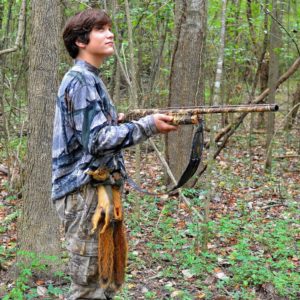
Season after season, the most consistent squirrel harvest is on Richard K. Yancey WMA, the 70,872-acre area in Concordia Parish.
This upcoming squirrel hunting season should be no different, Vidrine said. The expansive area is rich with a diverse number of hard- and soft-mast producing trees in bottomland hardwood habitat.
How plentiful are the squirrels? Last season’s harvest reflects that population and the area’s popularity among squirrel hunters — not only in the region but across the state. There were a reported 6,512 squirrels harvested in 4,379 hunter efforts, or 1.5 per effort in 2017-18.
The highest harvest-per-hunter effort last season was on Attakapas WMA, a 27,000-acre area in the Atchafalaya Basin, where there were 450 squirrels reported harvested in 187 hunter efforts, or 2.4 squirrels per hunter effort.
Thistlethwaite’s 2017-18 squirrel harvest showed 1,150 squirrels killed in 1,393 hunter efforts, or 0.8 squirrels per hunter.
RKY and Thistlethwaite had the highest mast crop production of all the region’s WMAs.
Sherburne leads for ducks
Sherburne WMA stands out as one of several top waterfowl hunting areas in the Lafayette region.
While duck hunting historically is fair to good on many of the region’s WMAs, Sherburne, Attakapas and Richard K. Yancey often are the best bets depending on weather conditions and the fall flight of migratory waterfowl.
“We expect another good season this winter depending on rainfall and cold weather,” Vidrine said.
Each Lafayette region WMA offers its own unique duck hunting experience and access to some prime duck hunting habitat, he said, adding other potentially fair to good duck hunting destinations are Grassy Lake, Spring Bayou and Pomme de Terre.
Sherburne is a 43,000-acre-plus mostly bottomland hardwoods area in Pointe Coupee, St. Martin and Iberville parishes.
Vidrine advised waterfowlers to take advantage of lottery duck hunts on Sherburne WMA at the South Farm Wetland Development Area. Tuesdays and Thursdays are on-site drawings, and Saturdays are pre-selected drawings, he said.
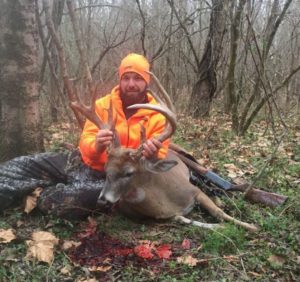
The LDWF began taking applications for disabled veterans and for regular waterfowl lottery hunts on Sherburne in early July. The application deadline is Sept. 28.
Applications and more information can be obtained by contacting your local LDWF office, or going to their website at www.wlf.louisiana.gov/hunting/lottery-hunts.
A $5 administrative fee must be submitted with each application. Hunters may apply for as many as three dates, but will be selected for no more than one.
Lafayette Region pros
• Logging on Sherburne WMA should increase browse production for several years and make for excellent deer and rabbit habitat.
• Thistlethwaite WMA’S bucks-only season has been adjusted to open during the peak of the rut, and either-sex days have been increased. Also, logging by the landowner continues on the WMA, enhancing habitat conditions to excellent.
• Richard K. Yancey, Thistlethwaite and Sherburne had the highest mast crop production of all the regions’ WMAs. Also, lactation rates were average on all three, so there should be a good fawn crop in 2018.
Lafayette Region cons
• Habitat conditions need vast improvement on Attakapas, Grassy Lake, Pomme de Terre and Spring Bayou WMAs. Browse conditions are poor due to a closed forest canopy. The hardwood timber market is very unstable, and getting a stand cut in this area has been difficult.
• Lactation rates were very low on Grassy Lake WMA.
• Hogs are running wild on Thistlethwaite, Richard K. Yancey, Sherburne, Grassy Lake, Pomme de Terre, Attakapas and the Acadiana Conservation Corridor.
LAKE CHARLES REGION
Talk about a real head-scratcher when it comes to the best squirrel hunting public area in Southwest Louisiana.
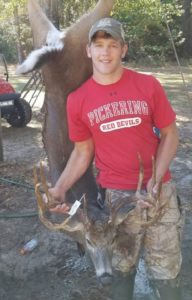
West Bay and Clear Creek WMAs are a lot alike as far as size, terrain and habitat. West Bay, however, is clearly the first choice when it comes to squirrel hunting, a passion for so many small game hunters in the region.
“What sets it apart from Clear Creek, I don’t know. They’re both pine plantations. They cut ‘em down, grow ‘em, cut ‘em down, grow ‘em …,” said Wendell Smith, the biologist regional manager for the Lake Charles region.
West Bay the choice for squirrels
He’s followed the successes of squirrel hunters on West Bay for nearly three decades in his career, and pointed out that 879 squirrels were reported harvested last season on the 59,189-acre WMA in Allen Parish.
The squirrel harvest on the region’s other WMAs dropped significantly after that, with a reported 324 squirrels in the bag last season on Vernon WMA and 314 squirrels harvested on Peason Ridge. Because of flooding, Sabine Island, normally one of the squirrel hunting hotspots in the region, experienced limited hunting pressure, Smith said.
But when the shooting starts this fall, it’s hard to beat West Bay.
““The thing about West Bay, it’s a long WMA. It has a lot of creeks that run through it and it’s got those (mast-producing) trees,” he said. “Also, on the north end, there’s a lot more hardwoods just south of Interstate 10.”
Creeks with pine trees along the banks make the difference, he said, naming Alligator Creek, Little Mill Creek, Middle Creek, Mill Creek, Buster Creek and Curtis creek as magnets for many squirrels. Scouting those creek bottoms is a must before a hunt, he said.
The area is full of cat squirrels, which stick to the bottomland hardwoods, he said. There are some fox squirrels in the “transition areas,” where bottomland hardwoods give way to piney woods, he added.
Mast crops are reliable barometers of what the squirrel population will be.
“It’s been raining a lot so it should be good,” he said, pointing out that some mast-producing trees, such as white oaks, don’t put out mast every year depending on their cycle.
As for Sabine Island WMA returning to the squirrel hunting spotlight, Smith has no doubts. Squirrels don’t swim off the area during a flood like deer do, he said, and with no flooding events the season should be top-notch again in 2018-19.
Fort Polk-Vernon for bucks
Smith was out one day in July on West Bay and Clear Creek WMAs and saw sights that should warm the hearts of public lands deer hunters in the Lake Charles region.
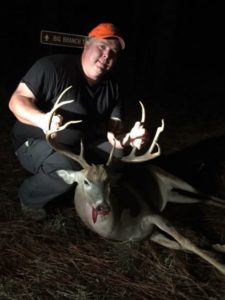
“I was out there … and saw a bunch of fawns. Sometimes you go and won’t see a deer. It seems like every 30 minutes I’d see a couple fawns running with mama,” Smith said.
Still, the primary area for solid deer hunting remains Fort Polk-Vernon WMA in Vernon Parish, where 627 deer were reported killed last season, the veteran biologist said. The sheer size of the area – 105,000-plus acres with rolling hills and some flats, fairly large stream bottoms and numerous small creeks, combined with favorable habitat conditions – make it a top destination each season.
Bowhunters in particular consider the area as having the potential to give up a wallhanger at any time. Many still talk about the 140 1/8 typical buck stuck on Fort Polk-Vernon several years ago.
Fort Polk-Vernon was followed closely by Peason Ridge (277 deer reported harvested last season), West Bay (254 deer reported harvested last season) and Clear Creek (234 reported harvested last season).
“The more you scout, the better your odds will be for bringing home the venison,” Smith said.
Clear Creek top for rabbits
Clear Creek WMA’s rabbit hunting success last season was logged mostly over the latter days of the season with the use of dogs, according to Smith. With minimal pressure, this 52,000-acre area full of pine plantations, rolling hills and draws in Vernon Parish had the top reported rabbit harvest in 2017-18, he said.
West Bay’s reported rabbit harvest also picked up late in the season when hunters were able to use dogs, he said.
So far this year, the rabbit outlook looks promising, he said.
“When I’m going home evenings, on the side of the road I’m seeing lots of bunnies. It should be good small game hunting,” he said.
Prescribed burning on Clear Creek, Peason Ridge and Fort Polk-Vernon WMAs should produce excellent early successional habitat for all wildlife, consumptive as well as non-consumptive, Smith said. Forest thinning efforts likewise will produce favorable wildlife habitats for several years on all areas in the Lake Charles region.
Rabbit hunters who go with their dogs also can try Marsh Bayou and Walnut Hill WMAs, which allow the use of dogs the entire hunting season. Also, dog training is allowed June 1 through Aug. 31.
Lake Charles Region pros
• Fort Polk-Vernon and Peason Ridge WMAs offer excellent hunting for deer, turkey, quail and squirrels on approximately 180,000 combined acres.
• Clear Creek WMA has excellent deer, turkey, woodcock, rabbit and dove hunting on 52,559 acres with one campground.
• West Bay WMA has excellent deer, turkey and squirrel hunting on 59,189 acres with two campgrounds.
Lake Charles Region cons
• Some Fort Polk-Vernon and Peason Ridge areas are subject to closure due to military training. For open areas during hunting season go to posted maps at www.jrtc-polk.army.mil/hunt2/hunt/default.htm.
• Sabine Island WMA is accessible only by boat, and hunters must use hip boots/waders to cross sloughs. Also, hunters need to bring a GPS because it’s easy to get lost – the ridges and sloughs look alike and can confuse newcomers.
MINDEN REGION
Want to get away from the maddening crowds (for the most part), and still have an above average chance of shooting a deer?
The Minden region has the place for deer hunters who relish such an opportunity. A “very long and narrow” wildlife management area with diverse habitat features fits the bill in North Louisiana, according to veteran LDWF game biologist Czerny Newland.
Get a Bodcau buck
Newland, who has been managing the deer herd and other wildlife in the region for more than 36 years, was describing Bodcau WMA, which gave up a total of 276 deer checked by LDWF staffers last season.
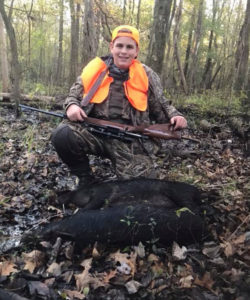
“The neat thing about Bodcau is it has a wide variety of habitat types, everything from upland pine to cypress/tupelo bottoms. That means anybody coming to hunt needs to scout,” Newland said.
He said some of the most successful deer hunters target the transitional zones — the edges of different habitats.
The 34,000-acre WMA in Bossier and Webster parishes is slender and long, stretching from just north of Bellevue about 30 miles to the Arkansas state line.
Veteran hunters know the most heavily hunted spots are on the Bossier City side and the southern end of the WMA.
Regardless, it’s important to scout beforehand because along with the diverse habitat, if there’s someone on your spot, you need additional options.
Bodcau WMA’s prime food sources include acorns, greenbrier and honeysuckle.
Newland said the 2017 mast crop was well below the bumper crop of 2016, but it wasn’t a complete failure.
“A good 2018 acorn crop would affect early season deer behavior as well as determine where squirrels would be feeding, but the greatest benefit would be allowing females of both species (deer and squirrels) to obtain optimum breeding conditions,” he said.
The best opportunity to get a nice buck is at Loggy Bayou WMA, a smaller 6,558-acre area in Bossier Parish. It’s all bottomland habitat and doesn’t have any of the upland habitat features that are found on Bodcau, he said.
If you’re a bowhunter, your best chance at sending a broadhead into a quality buck is Bayou Pierre WMA, Newland said. Bayou Pierre and Soda Lake WMAs are archery-only areas.
At Bayou Pierre WMA last season, 23 deer were killed by 443 bowhunters.
“Some of the archery hunters really like that they don’t have to compete against gun hunters,” Newland said.
He pointed out both archery-only areas are full of hogs — and there’s no limit on those animals.
Bodcau tops for squirrels, too
Bodcau WMA offers the best squirrel hunting experience in the area because of the variety of habitat types available to squirrels, Newland said. There are piney woods, upland hardwoods and true bottomland hardwood habitats for them to choose from across the area, with mixed pine hardwood in the hills.
LDWF staffers checked 1,786 squirrel hunters last season, and they reported 2,786 squirrels harvested.
The Minden region’s predominant species is gray squirrels, with a few fox squirrels. All of the region’s WMAs allow dogs for squirrel hunting during specified periods, Newland said.
However, on Soda Lake WMA, small game hunting is limited to falconry, and only on the west side of the area.
Try Loggy Bayou for ducks
When water levels are favorable for ducks, and there are fresh flights of the migratory birds present in Northwest Louisiana, waterfowl hunting success is fair to good on WMAs in the Minden region, according to Newland.
The biologist points duck hunters to Bodcau and Loggy Bayou WMAs, where both have water control structures to help in holding water. However, he said water levels in both areas are determined by rainfall.
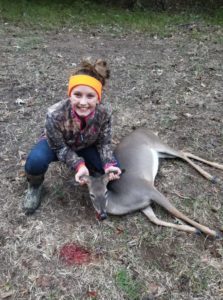
Wood ducks, gadwall, teal and mallards are the most common ducks in hunters’ bags each season, he said.
Bodcau WMA should have the most action, weather and fall flight numbers permitting. That was the case last season when LDWF staffers checked 1,197 duck hunters who accounted for 684 ducks.
Some of the area’s best duck hunting opportunities are in the 1,600-acre greentree reservoir and in the numerous sloughs and backwater flooded areas, provided the water level is right.
Loggy Bayou WMA’s success rate last season was 212 ducks for the 290 duck hunters checked. But the prime areas there are small and can get crowded, so try to go on weekdays.
Minden Region pros
• Next year, more acreage will be added to Soda Lake WMA, just 15 miles from Shreveport. Part of a land purchase for the expansion has been completed and the rest of the addition (almost doubling the 2,500-acre area) will follow before 2019-20.
• Bodcau WMA’s deer season was set early because the most deer activity is in November, when the rut is on. It serves as a flood control basin, but in all but the most extreme situations has some areas that remain unflooded.
• Based on summer observations, the rabbit population appears to be on the upswing in the Minden region.
Minden Region cons
• The Minden region’s 2017 mast crop was well below the bumper crop of 2017 … but is not a complete failure. A good acorn crop this year would impact early-season deer behavior and determine where squirrels will feed.
• Feral hogs are a problem on all Minden WMAs. The population continues to thrive, which raises the threat of disease transmission to other species.
MONROE REGION
Two wildlife management areas known for deer hunting harvest rates double up as top-notch duck hunting destinations in North Louisiana.
Both Russell Sage and Boeuf WMAs have a higher ducks-per-hunter-effort average than the rest of the public areas in the Sportsman’s Paradise. Russell Sage boasted 1.55 ducks per hunter effort, while Boeuf had 1.33 ducks per hunter effort in last season. (The state average for WMAs is 1.03.)
Try Russell Sage for ducks
And that was a subpar waterfowl harvest because of drought conditions and non-functioning water control structures. Managers can’t do anything about lack of rain, but they addressed the control structures.
Both areas also give hunters access to a large number of acres managed specifically for waterfowl, according to Mitch McGee, the region’s biologist supervisor.
The harvest included resident and migratory wood ducks, mallards, pintails, teal, gadwalls, widgeons, shovelers, scaup, ringnecks, canvasbacks and redheads.
The good news is McGee thinks duck harvest numbers could be higher this season. Low water levels prevented LDWF staffers from using pumps to flood key areas on Russell Sage last year, and worn out water control structures quashed hopes to flood parts of Boeuf WMA, he said.
McGee said the 38,000-acre-plus Russell Sage WMA in Morehouse, Ouachita, Richland and Caldwell parishes provides waterfowl hunters with access to more than 4,800 acres of moist soil units, including Wham Brake, 2,550 acres of green tree reservoir, 2,767 acres of flooded agricultural areas and approximately 1,600 acres of passively managed natural swamp and sloughs.
“We didn’t have a lot of water up here,” he said, noting the Bayou Lafourche Canal was too low to pump. “If we have normal rainfall, we should have a good duck season. We’ve manipulated a lot of areas this year to get back in good production for waterfowl.”
LDWF also tweaked regulations to enhance waterfowl hunting on both Russell Sage and Boeuf WMAs. For example, use of motorized vessels is limited on certain units, and use of motorized vessels during certain hours is prohibited, McGee said.
At Boeuf, the faulty water control structures have been repaired, and with favorable weather conditions, managers plan to flood more of the area this season.
Boeuf tops for bucks
Quality browse conditions — the result of recent timber cutting — are among the positives going into the deer hunting season on areas in the Monroe region, particularly on Big Lake, Boeuf and Russell Sage WMAs.
Those typically are the top three areas for deer hunting in the region, according to McGee. With normal summer rainfall patterns underway this year, the outlook is even better, he said.
The average deer-per-hunter ratio was higher than the state average on each of those areas, he said.
The state average of success per-hunter-effort was .07 for deer, so it’s important to note the ratio was .32 on Big Lake, .19 on Boeuf and .08 on Russell Sage.
Boeuf WMA is charging to the forefront as a deer hunting destination. Before last season, 443 deer were reported harvested there, an increase from 179 deer reported in 2015-16.
Another option for deer hunters is Bayou Macon, where a 600-acre timber harvest on the nearly 7,000-acre area in East Carroll Parish means there “ought to be a lot of browse and habitat for deer up there,” McGee said.
Also, Buckhorn WMA is an area where hunters who have the time and don’t mind scouting and walking through thick palmetto understory can hunt where there’s less pressure. Big deer up to 300 pounds have come off the area the past few seasons.
It’s Big Lake for bushytails
After an ultra-solid mast crop last season and what looks to be a good red oak mast crop this year, squirrel hunters should make plans to hunt the top three WMAs in the region, which feature mature bottomland hardwood forests that offer quality bushytail habitat.
Big Lake, Boeuf and Russell Sage WMAs all have an abundance of mast-producing trees that produce acorns, pecans and soft mast species – major food sources for squirrels in the fall and winter months. As McGee noted, squirrel populations fluctuate with hard mast yields and, because the mast crop was above average last season, hunters should enjoy more success this season.
Last season’s squirrel harvest on those three areas was above the state average of 1.55 squirrels per hunter effort, the biologist pointed out. At Big Lake, the ratio was 2.65/hunter effort, at Boeuf the ratio was 2.26/hunter effort and at Russell Sage the ratio was 1.30/hunter effort.
Big Lake features tall trees and far less palmetto than at Buckhorn, which still has its share of fair to good squirrel hunting. Big Lake WMA had a banner squirrel harvest in 2016-17 when 3,616 squirrels were reported harvested in 1,513 hunter efforts.
Monroe Region pros
• The 2017 mast crop in this region overall was favorable, and this fall appears to be setting up for good red oak mast.
• Several WMAS in the region are getting timber harvests, which will improve deer browse in those areas this season.
• Lactation rates for white-tailed deer have been stable across the region for the past five years, typically averaging ~65-85 percent for 2.5- to 3.5-year-old-plus does. Also, body weights for bucks and does have remained stable since 2013.
Monroe Region cons
• Flooding during February and into the growing season may have adverse effects for many of the green tree reservoirs on Monroe-region WMAs.
• Feral hogs are an issue on the region’s WMAs.
PINEVILLE REGION
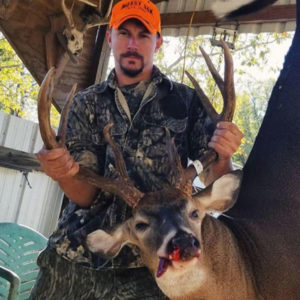
There are some valid reasons why Dewey Wills WMA continually leads the Pineville region as an area holding big deer — and lots of them.
Cliff Dailey, WMA biologist supervisor and a 10-year LDWF veteran, said the sheer size of the property — 63,901 acres in LaSalle, Catahoula and Rapides parishes — plus increased hunter effort combine to put it at the top of the region’s deer harvest each season.
Dewey Wills grows big bucks
The herd is sizeable, and there are many quality deer roaming the bottomland hardwoods, sloughs and cypress brakes that provide such excellent habitat.
And food’s there, too. Nuttall, willow and overcup oak provide fall mast for deer and squirrels.
What’s more, old dying trees combined with timber harvesting have created canopy gaps that make briar thickets for the deer to use.
Dewey Wills WMA’s deer harvest numbers last season are a testament to these highly favorable conditions. Dailey reported that 418 deer were killed there, up from 375 the year prior.
And because of its fertile soils and the fact that it’s adjacent to several thousand acres of agriculture and WRP area, Dewey Wills grows big deer.
To increase the odds of drawing a bead on a trophy, the season’s deer hunting schedule has been changed, Dailey said.
The either-sex modern firearm season was moved last season from early December to Thanksgiving weekend. The either-sex primitive hunt season was moved from January to early December and was reduced to two days.
Those alterations allowed the majority of does to be harvested before the rut, Dailey said, making for a more efficient rut and providing more food resources to the residual herd in late winter.
Two of the region’s other leading areas for deer harvests are Camp Beauregard and Sabine WMAs.
At Camp Beauregard, 118 deer were reported harvested in 2017-18, up three from the previous season.
At Sabine, where 43 deer were reported harvested last season, there are clear cuts in several areas that have been replanted and currently provide both cover and food.
Alexander State Forest a good option for squirrels
Dewey Wills WMA’s past two mast crops came in above average — and the area’s squirrel population has responded in kind, Dailey said.
As a result, squirrel hunters bagged 6,910 squirrels in 2017-18, nearly 2,000 more bushytails than the previous season.
The 64,000-acre WMA’s popularity shows in the days leading up to opening day of small game hunting season in Louisiana. Hunters from across the state, well aware of the area’s squirrel-hunting notoriety, descend on the WMA and camp out, waiting for that first shot each season.
However, if you want to hunt squirrels and avoid the crowds, Dailey advised to try to get out in the woods on weekdays.
There usually is less squirrel hunting pressure on Little River WMA, another area where squirrel hunters enjoy camping on opening weekend. Last season, the area gave up a reported 583 squirrels, 53 more than the prior year.
Alexander State Forest WMA is another option for squirrel hunters. It has a mix of pine and hardwood areas, with higher concentrations of mast-producing hardwoods along major drainages. There were 303 squirrels reported harvested there last season.
For rabbits, it’s Dewey Wills
Dewey Wills WMA swept the top harvests for deer, squirrel and rabbits last season.
It has great habitat for rabbits inside and adjacent to recent clear cuts and thinning in bottomland hardwoods, according to Dailey.
Other features that make it a prime rabbit hunting destination in the region include the fact large oak tops left over from logging provide excellent cover, he said.
How’d the habitat conditions play out last season as far a rabbit harvests? There were 129 rabbits reported harvested in 2017-18, 67 more than the previous year.
Dewey Wills is one of the state’s Small Game Emphasis Areas, which allows for earlier use of rabbit hunting with dogs. Dailey advised checking into this added feature.
Sabine WMA’s reported rabbit harvest last season was 61, an increase of 35 from the rabbit harvest the prior year. The area has numerous clear cuts, plus areas that have been replanted to provide cover and food.
Pineville Region pros
• Dewey Wills WMA had a major spring flood that lasted several weeks. However, deer browse and other wildlife foods are at favorable levels to sustain native populations.
•Little River WMA’S prescribed fire rotation (which reduces mid-story competition in upland pine stands to allow food plants to grow) paid off this year with favorable habitat conditions. And several new fire breaks created around timber stands can be used as walking trails. Ditto for Camp Beauregard and Sabine WMAs.
Pineville Region cons
• Little River WMA had a below average mast crop in 2017. As a result, squirrel numbers should be down this year.
• Alexander State Forest WMA’s deer numbers are low compared to other areas, which means the herd has room for expansion and available resources to stay healthy. The removal of roads and trails hinder public access to certain parts of the WMA.


